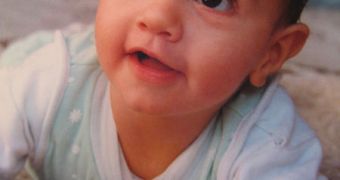Being wary of dangers is, arguably, one of the things that allowed our once-fragile species to become strong enough to take over the planet. Our ancestors developed a large number of reflex and pattern-recognition connections in their brains, in order to maximize their chances of survival. But experts have always been curious as to when we began to detect these dangers, and they have also wanted to know whether detecting them has something to do with babies beginning to crawl. A new scientific investigation finds a correlation between the two, LiveScience reports.
Once they perceive threats, adult humans can engage in a variety of defensive behaviors, such as crouching, jumping or running. It stands to reason that infants cannot do the same, but, apparently, they too can sense looming danger. Most possible threats to our “structural integrity,” psychologists say, are perceived visually, when light reflecting off them reaches the retina. As the projection starts getting bigger, we sense that the thing we are watching approaches, and then decide whether to stay and fight or take evasive maneuvers.
The changes in the way we perceive things around us are termed “looming stimuli,” psychologists report. They create waves after waves of neural activity inside our brains, more specifically in the visual cortex, located at the back of the skull. In a new scientific study, the activity levels of this area were measured in 18 infants, as the small ones watched a red dot approaching on a computer screen. The investigation revealed that the patterns of activity in the visual cortex appeared in the infants as well, and also that they were very similar to the ones in adults. Additionally, older age (ten months) meant that the children were able to perceive the danger faster than smaller infants (five months).
“This could be interpreted as a sign that appropriate neural networks are in the process of being established and that the age of eight to nine months would be an important age for doing so. Coincidentally, this is also the average age at which infants start crawling. This makes sense from a perspective where brain and behavioral development go hand in hand. Namely, as infants gain better control of self-produced locomotion, their perceptual abilities for sensing looming danger improve,” the experts write in the latest issue of the journal Naturwissenschaften.
In charge of the research were Norwegian University of Science and Technology (NUST) experts Ruud van der Weel and Audrey van der Meer.

 14 DAY TRIAL //
14 DAY TRIAL //